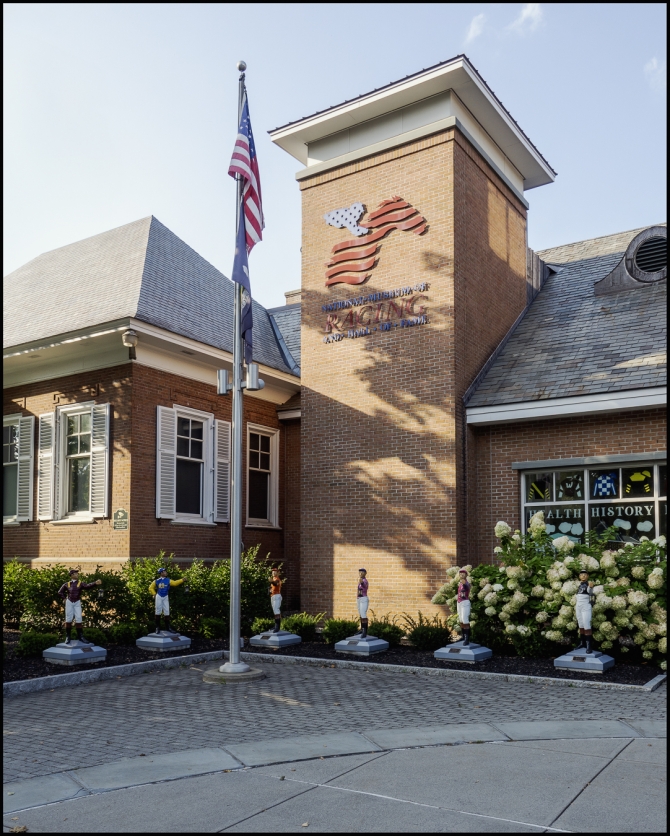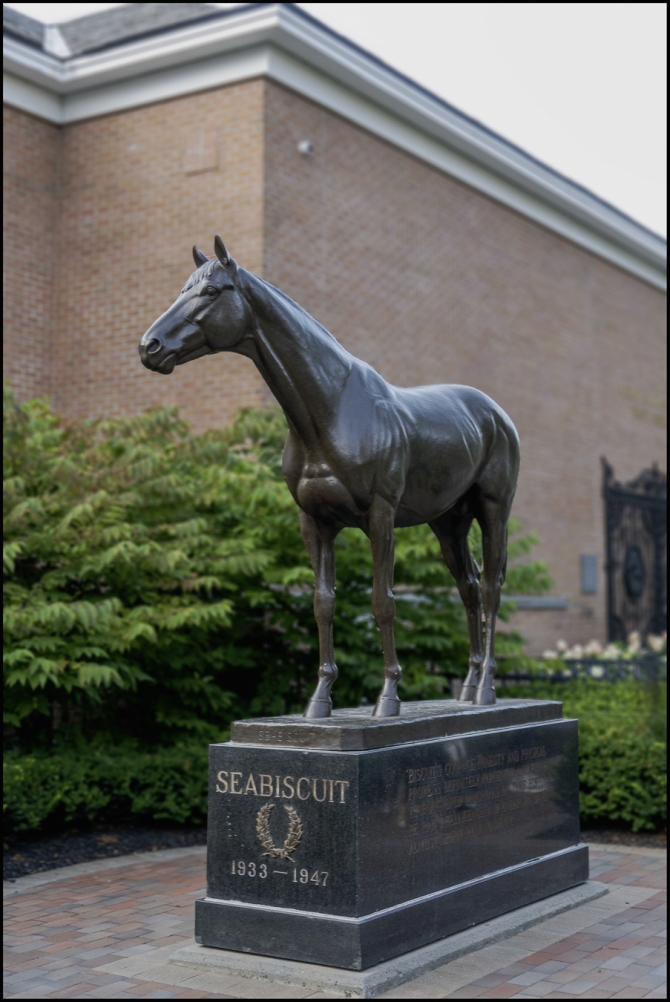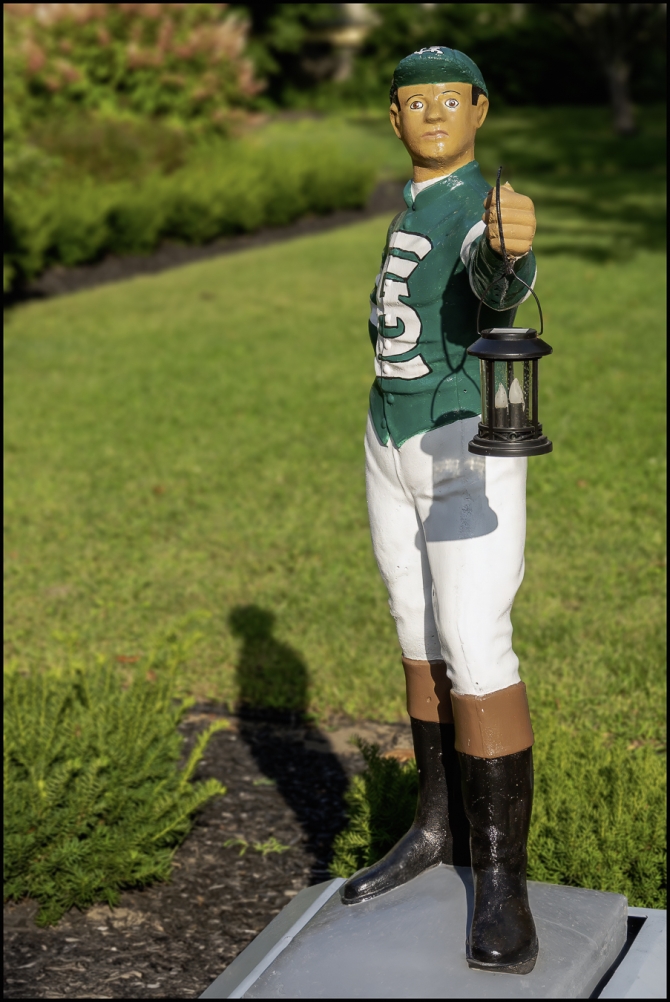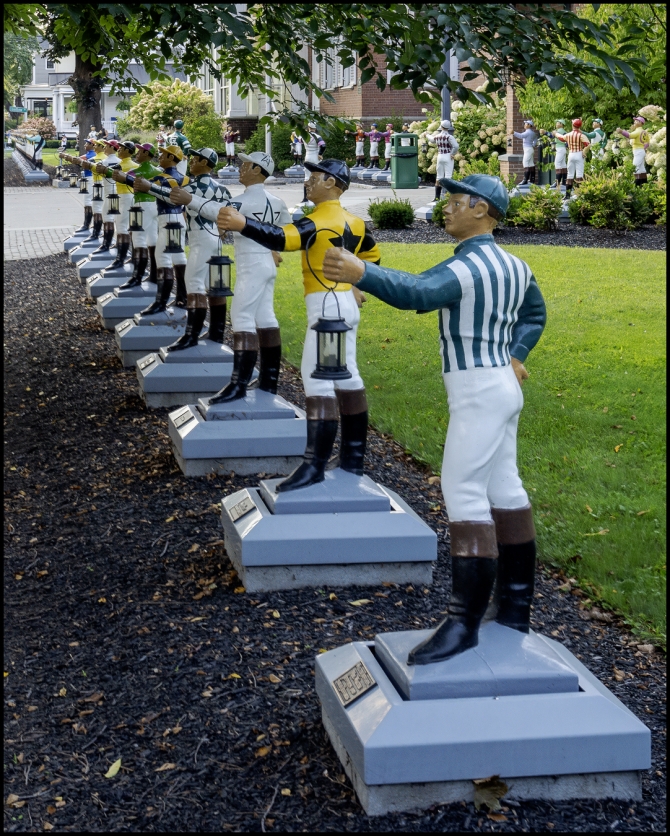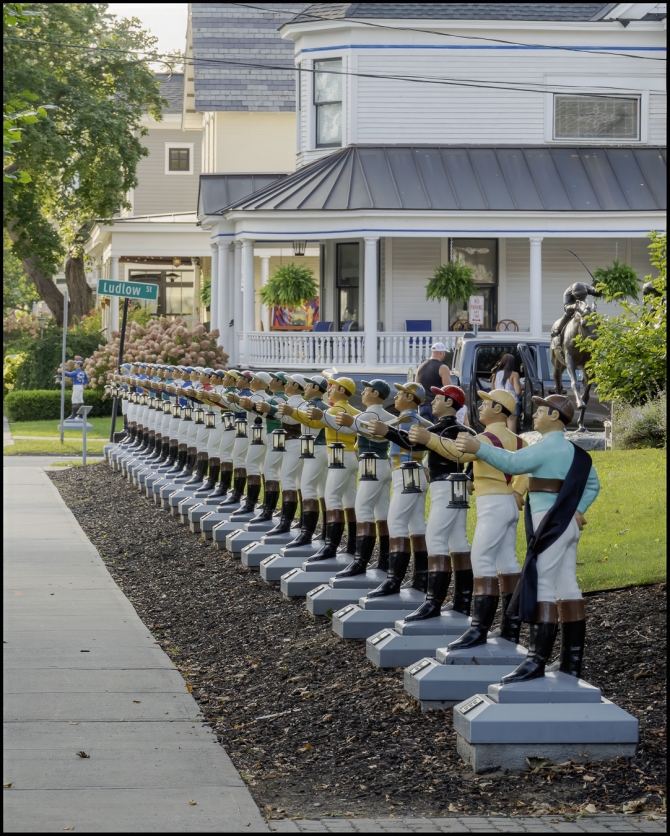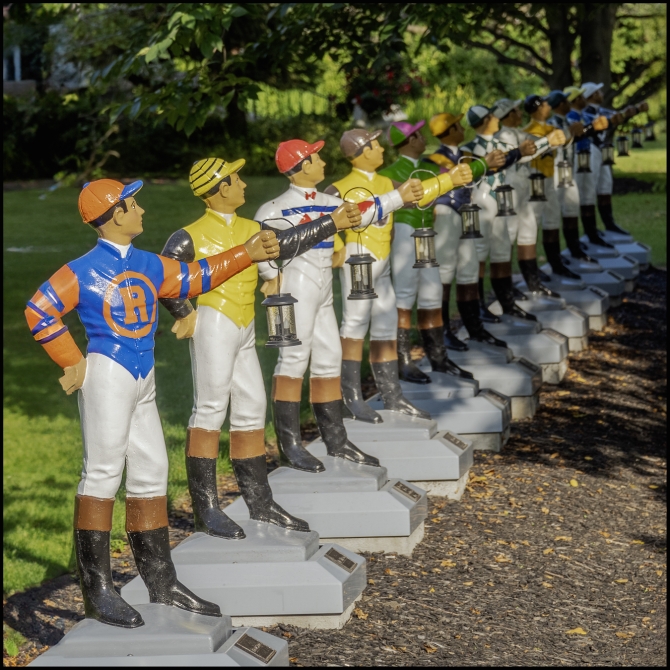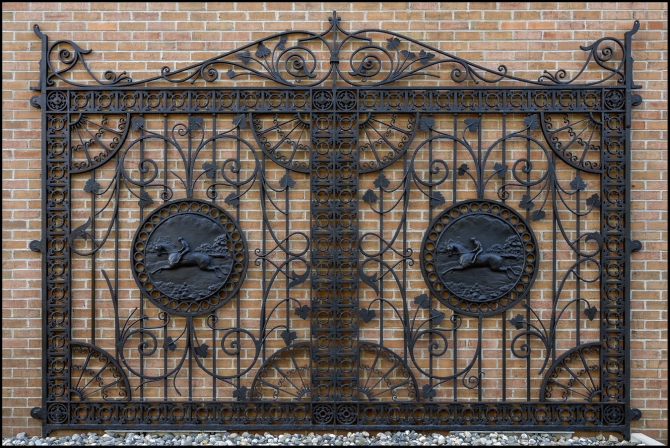According to Wikipedia:
The National Museum of Racing and Hall of Fame was founded in 1950 in Saratoga Springs, New York, to honor the achievements of American Thoroughbred racehorses, jockeys, and trainers. In 1955, the museum moved to its current location on Union Avenue near Saratoga Race Course, at which time inductions into the hall of fame began. Each spring, following the tabulation of the final votes, the announcement of new inductees is made, usually during Kentucky Derby Week in early May. The actual inductions are held in mid-August during the Saratoga race meeting.
The Hall of Fame’s nominating committee selects eight to ten candidates from among the four Contemporary categories (colts and horses, fillies and mares, jockey and trainer) to be presented to the voters. Changes in voting procedures that commenced with the 2010 candidates allow the voters to choose multiple candidates from a single Contemporary category, instead of a single candidate from each of the four Contemporary categories. For example, in 2016, two mares (Rachel Alexandra and Zenyatta) were inducted at the same time.
The museum also houses a large collection of art, artifacts, and memorabilia that document the history of horse racing from the eighteenth century to the present.
History
The National Museum of Racing was founded in 1950, led by Cornelius Vanderbilt Whitney and a group of people interested in thoroughbred racing. The museum first opened its doors in 1951, at which time it occupied a single room in Saratoga’s Canfield Casino. The establishment was supported by the city of Saratoga Springs, which donated $2,500, the Saratoga Racing Association, which donated $5,000, and various patrons of the sport, who also donated various pieces of art and memorabilia. The first item in the museum’s collection was a horseshoe worn by the great Lexington.
In 1955, the museum relocated to its current location on Union Avenue, across the street from the main entrance of the historic Saratoga Racecourse. The museum was relocated to a newly reconstructed building and a thoroughbred racing Hall of Fame was included. Since then, the museum has expanded several times to allow for the display of its extensive art collection and more multimedia displays on the history of the sport.
Sea Biscuit, 1933-1947.
A nearby plaque reads:
Wrought iron, ca. 1870
9 feet, 5 inches high by 13 feet wide
Gift: Mr. and Mrs. E. Stack Gately
This gate once stood at Pimlico Race
Course near the clubhouse of the
Maryland Jockey Club, which operataed
Pimlico beginning in 1870. Chanins and
pulleys were used to raise and lower
the gate. Removed in 1966 when fire
destroyed the clubhouse, the gate is an
excellent example of mid-nineteenth
century wrought iron craftsmanship
Taken with a Sony RX10 IV

